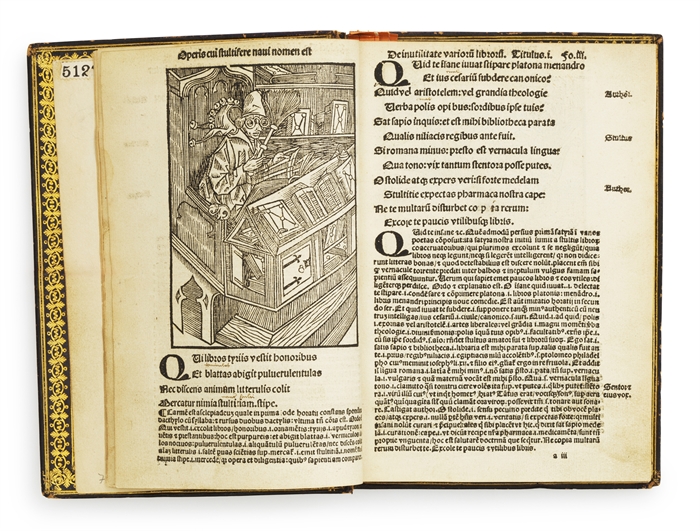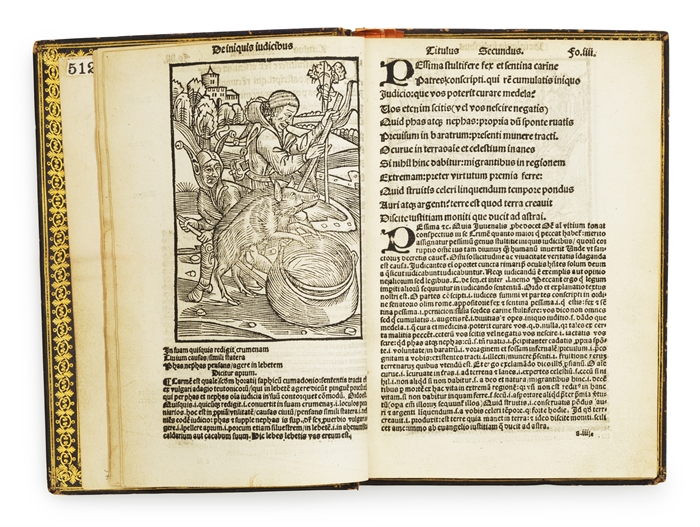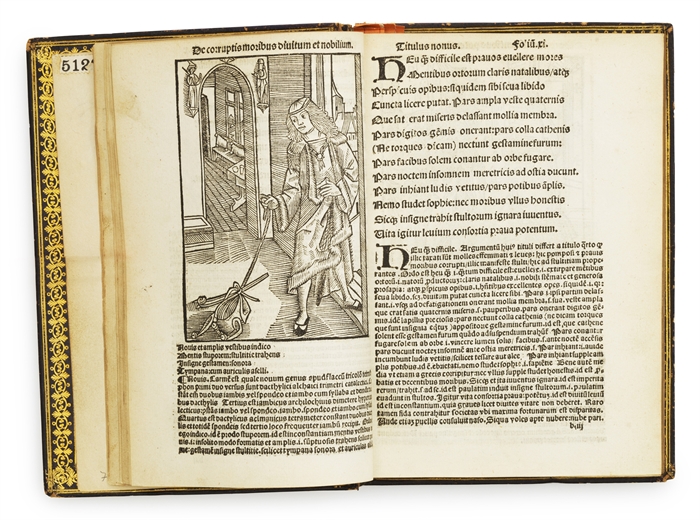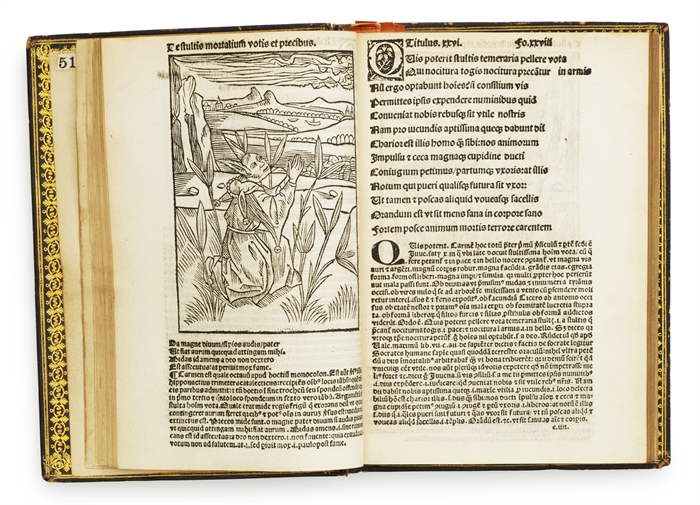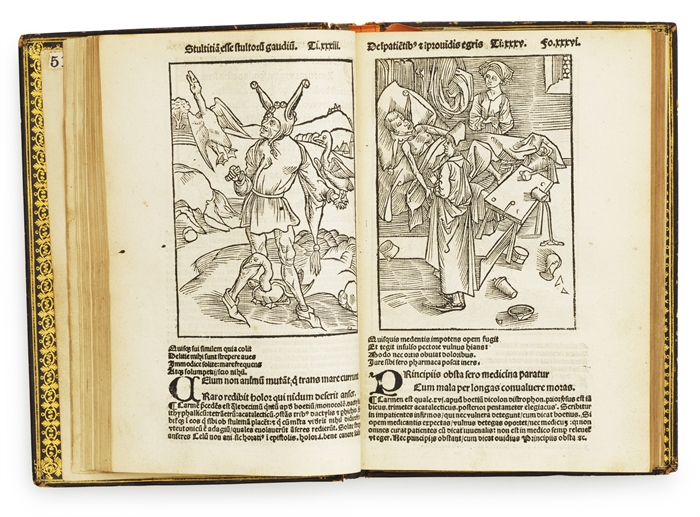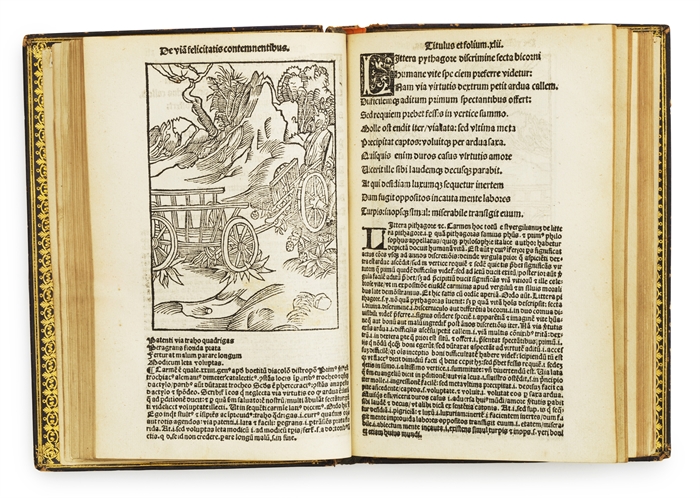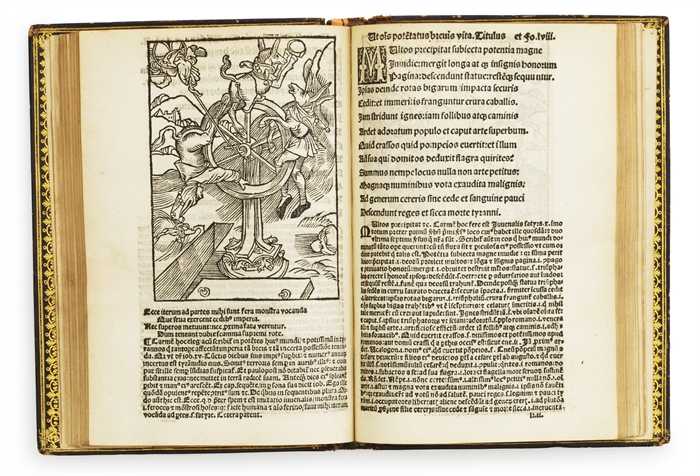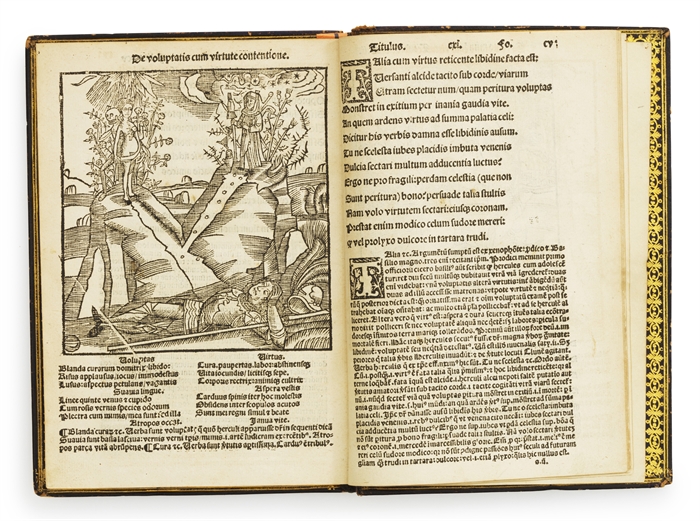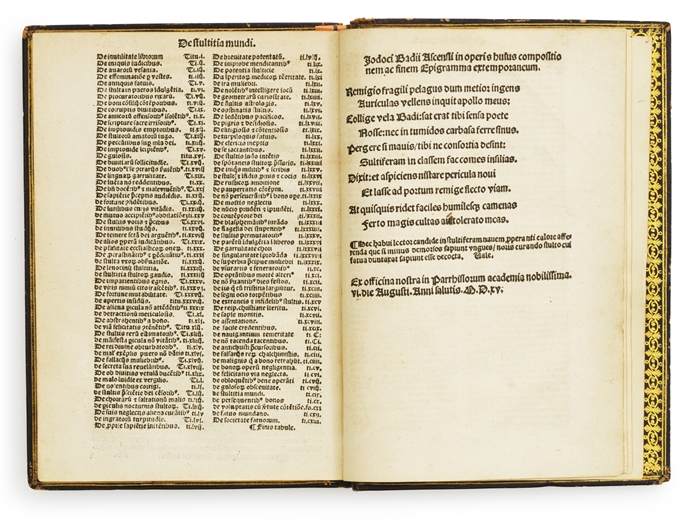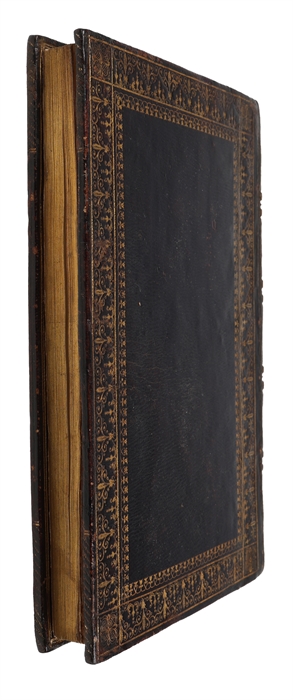BADIUS' MORAL MAGNUM OPUS - ONE OF THE MOST BEAUTIFUL FRENCH POST-INCUNABLES
BADIUS, JODOCUS ASCENSIUS.
Navis stultifere collectanea vario carminum genere non sine eorundem familiari explanatione conflata...Venundantur parisiis in vico Sancti Jacobi sub signo Pellicani.
(Josse Bade & Guillaume de Marnef), (on colophon:) August 6, 1515.
8vo. Wonderfully bound in a mid-19th century full morocco binding with broad gilt ornamental borders to boards, raised bands and richly and exquisitely gilt spine. Broad inner gilt ornamental borders to baords and gilt decoration to edges of boards. All edges gilt. Hinges expertly restored.With the gilt leather bookplate of Edward Hailstone to inside of front board and with the engraved armorial bookplate of C.L.F. Robinson to front free end-paper. Old printed private library number to verso of front free end-paper. Early owner's name to title-page and early, neat handwritten notes to first couple of leaves. Ff. 67-68 with a clean cut tear to the middle, no loss. First couple of leaves a little darkened. Overall in excellent condition with clear and fresh imprints. Title-page printed in red and black, with half-page woodcut ullustration and with Marnef-device. 107, (1) ff. Illustrated throughout with 115 magnificent woodcuts (including the one of the title-page), most of them ca 1/3 page, two of them full-page.
Exceedingly scarce early edition of Badius’ great Navis Stutifere, his moral magnum opus and one of his most important works. The work was inspired by Brandt’s “Das Narrenschiff”, and like Brandts’ work, Badius’ Navis Stultifere (which uses the same title in Latin and refers to Badius on the title-page) is also a treatise on contemporary morals and the vices of man, written in Latin verse and with prose commentaries. This magnificent work is considered one of the most beautiful French books from the beginning of the 16th century. This is the fourth edition of the work, magnificently illustrated with the wonderful suite of the 114 original woodcuts from Brandt’s work (1494). The first edition was published in 1505 and the second and third in 1507 and 1513 respectively. All of the early editions are of the utmost scarcity. Badius’ Navis Stultifera must not be confused with his Stultiferae Naves from 1500, which Badius characterized as a supplement to Brandt’s work, directed at women, whereas the present work, which was first published in 1505, is a moral work in its own right, inspired by Brandt’s, together with Badius’ own prose interpretations, being a much freer, original, and personal work. The work should also not be confused with a mere Latin translation of Brandt’s work, as this is Badius’ interpretation and original rendering of moral values inspired by Brandt, not an actual translation. If anything, it can be called an original reworking, with original prose commentaries, of Brandt’s “Narrenschiff”, caricaturing the human vices of different social classes. Badius has divided the text into 113 verse parts, each of them accompanied by a prose explanation differing significantly from Brandt’s text. Each verse chapter is also accompanied by one of the magnificent woodcuts as well as a poem. The poems are frequently drawn from the classics such as Virgil, Horace, and Juvenal, but also from Baptista de Mantua. As the frequent reprinting of it also points to, Badius’ great moral work was hugely influential. As Renouard suggests (I:164), the quotations and moral commentary, plus its frequent reprinting in the early 16th century, could point to its use as a school text. "The role of printers and the printing press as agents of cultural change in the period of transition between medieval and early modern times is generally considered to be of major importance. The development and spread of printing in the last decades of the fifteenth century and the first half of the sixteenth century was a significant factor in the diffusion of humanist thought and criticism. Some of the printers who presided over the publication of classical and contemporary works were active scholars and committed humanists themselves, supplying comments on the works that came off their presses. In France one of the most influential scholar-printers of the era was the Flemish-born Jodocus Badius Ascensius (1462–1535). From 1503 onwards, he ran his own printing office in Paris, where he published an impressive number of classical and humanist texts, often preceded by a preface in his own hand. Best known for his activities as a printer- This lovely copy has excellent provenance: 1.Edward Hailstone (1818-1890), Yorkshire solicitor and churchwarden, renowned British book collector and antiquary; fifth son of the botanist Samuel Hailstone (1767-1851). 2.Colonel Charles Leonard Frost Robinson, also a great book collector, who immigrated to America from England in 1907 and in 1911 became the president of the Colt Firearms Company in Hartford, Connecticut. Only 9 or 10 copies of the 1515-edition are listed in libraries worldwide, and the book, in all its early editions, is very rare in the trade. We have only been able to find very few copies at auction within the last 50 years. Brunet I, 1206; Renouard II, 84:6.
publisher, Badius was also a renowned grammarian, poet, commentator and creative writer." (Anne-Marie De Gendt: On Pleasure..., p. (67)).
Order-nr.: 62325



